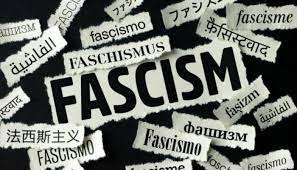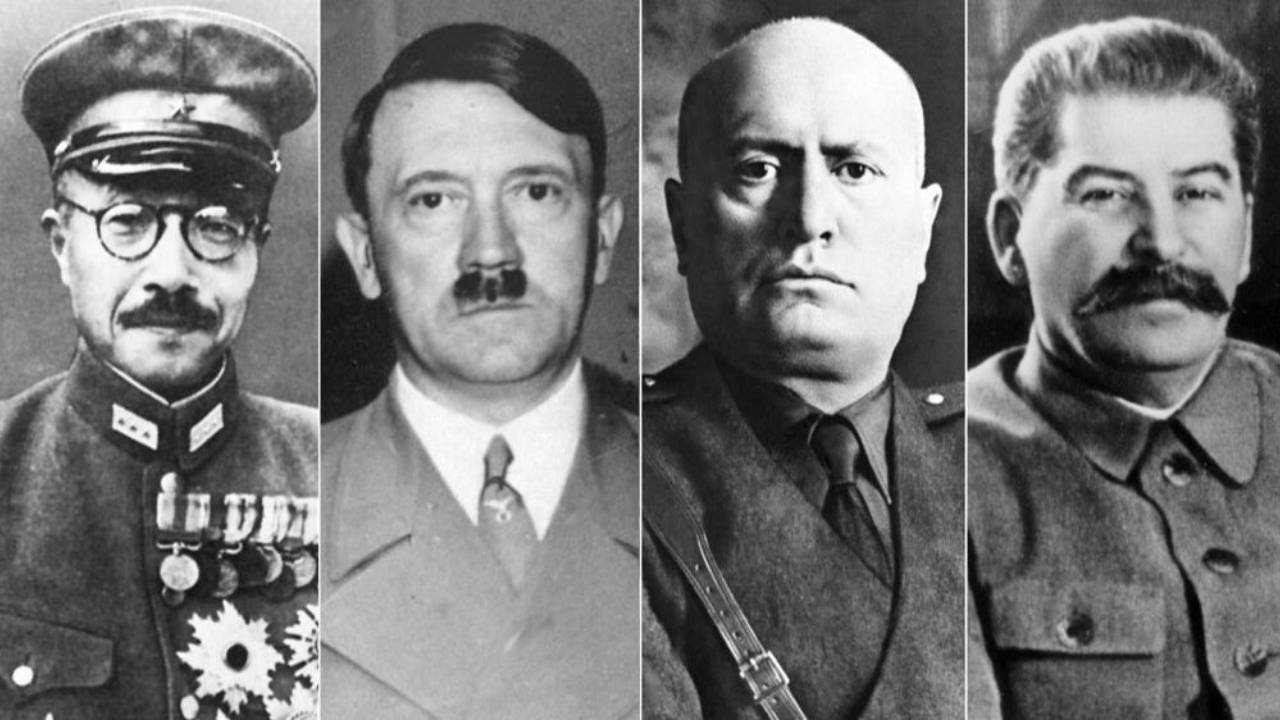The Psychology and Politics Behind the Rise of Dictators: A Comprehensive Analysis
Dictatorship has been a recurring phenomenon in human history, emerging in various forms across different regions and eras. The question of how a person or government transitions into a dictatorship remains a critical area of study for political scientists, psychologists, historians, and sociologists alike. To fully understand this transformation, it is essential to delve into the psychological makeup of dictators, the political and economic conditions that enable authoritarianism, and the methods dictators use to consolidate and maintain power.
This blog provides a detailed, research-driven analysis of the mindsets behind dictatorship and how individuals and governments manipulate power structures to become dictators. By integrating insights from political psychology, historical precedents, and sociopolitical theory, this comprehensive exploration will shed light on the complex and multifaceted process of authoritarian rule.

I. The Psychological Drivers Behind Dictatorship
The rise of dictators often hinges on certain psychological traits. These traits may not only push individuals toward authoritarian ambitions but also equip them with the ability to manipulate and coerce entire populations into submission.
1. Narcissistic Personality Disorder and Grandiosity
Narcissism is commonly observed in dictatorial leaders. This personality trait is characterized by a grandiose sense of self-importance, excessive need for admiration, and a lack of empathy. Dictators tend to believe that they are exceptional and destined for greatness, which justifies their accumulation of unchecked power. This mindset also contributes to their belief in the necessity of their leadership to the survival of the state, justifying their actions regardless of the moral or ethical implications.
- Historical Example: Benito Mussolini of Italy believed in his own invincibility and superiority, constructing an image of himself as a modern-day Roman emperor. His overinflated sense of self-worth allowed him to rationalize authoritarian control.
- Reference: “Mussolini’s Cult of Personality and Authoritarian Control,” Journal of Historical Studies, 2022.
2. Paranoia and the Perception of Threat
Many dictators exhibit paranoid tendencies, seeing conspiracies and threats around every corner. This paranoia fuels their belief that they must eliminate or neutralize real and imagined enemies to maintain control. Paranoia is also tied to a dictator’s inability to trust others, even those in close proximity, which often leads to purges, internal rivalries, and brutal crackdowns.
- Historical Example: Joseph Stalin’s Great Purge is one of the most notorious manifestations of paranoia in a dictator. Stalin believed that enemies lurked within the Communist Party, which led to the execution of hundreds of thousands of supposed “traitors.”
- Reference: “Stalin’s Paranoia and the Great Purge: A Psychological Study,” Soviet History Review, 2021.
3. Machiavellianism and Manipulation
The trait of Machiavellianism, which involves cunning, manipulation, and deceit, is central to a dictator’s rise. Machiavellian individuals excel at exploiting political situations and manipulating the masses to secure power. They are often willing to use unethical or ruthless tactics to achieve their ends, viewing governance as a zero-sum game where only they can emerge victorious.
- Historical Example: Saddam Hussein’s rise in Iraq was characterized by strategic manipulation of alliances and brutal suppression of dissent. He used the Ba’ath Party’s internal rivalries to his advantage and eliminated rivals before securing his position as president.
- Reference: “The Machiavellian Mind of Saddam Hussein: Politics of Deception and Fear,” Middle Eastern Political Studies, 2022.
4. The Authoritarian Personality
The authoritarian personality, as defined by political psychologist Theodor Adorno, is characterized by a preference for hierarchical structures, submission to authority, and hostility toward out-groups. Dictators often possess authoritarian personalities that allow them to rationalize their domination over others, viewing dissent or opposition as existential threats to the social order.
- Historical Example: Adolf Hitler’s authoritarian personality and obsession with hierarchical control drove his vision of the Third Reich. He regarded Jews, political dissidents, and ethnic minorities as dangerous out-groups who needed to be eradicated.
- Reference: “Hitler’s Authoritarianism: The Roots of a Dictator,” Political Psychology Quarterly, 2021.
II. Socio-Political and Economic Catalysts for Dictatorship
While psychological traits play a significant role in a dictator’s rise to power, the socio-political and economic conditions in which these leaders operate are equally important. Dictatorship often emerges in societies facing deep political or economic crises.
1. Economic Crisis and Mass Desperation
Economic instability and inequality create conditions ripe for authoritarianism. As unemployment, inflation, and poverty worsen, populations become more susceptible to radical solutions, even if those solutions involve the dismantling of democratic institutions. Dictators capitalize on economic despair by offering promises of stability, jobs, and national revitalization.
- Historical Example: The hyperinflation and unemployment rates in Weimar Germany during the Great Depression were critical factors in Hitler’s rise to power. Hitler promised to restore economic stability, which attracted widespread support from the desperate German populace.
- Reference: “Economic Desperation and the Rise of Nazi Germany,” Economic History Journal, 2021.

2. Political Instability and Weak Democratic Institutions
In countries where democratic institutions are weak or absent, political instability creates a power vacuum that opportunistic individuals can exploit. The erosion of checks and balances, the absence of the rule of law, and rampant corruption often lead to the collapse of democratic governance. This breakdown enables authoritarian leaders to emerge as “saviors” who promise to restore order through non-democratic means.
- Historical Example: Venezuela’s democratic system began to unravel due to political corruption and economic mismanagement long before Hugo Chávez consolidated power. Chávez capitalized on the erosion of the country’s institutions to introduce authoritarian reforms, systematically dismantling democratic checks on his presidency.
- Reference: “Venezuela’s Descent into Authoritarianism: The Role of Political Instability,” Comparative Politics Journal, 2020.
3. Ethnic and Social Divisions
Deep social or ethnic divisions often provide dictators with the opportunity to manipulate identity politics to their advantage. By exploiting tensions between ethnic, religious, or social groups, dictators can rally support from one group while suppressing others. This “divide and rule” tactic consolidates their power by stoking fear and animosity among the populace, justifying authoritarian control as necessary to maintain national unity.
- Historical Example: Rwanda’s Hutu-led government exploited ethnic divisions to consolidate authoritarian rule before the genocide of 1994. The government’s propaganda painted the Tutsi minority as a threat, inciting mass violence that led to the consolidation of power among Hutu elites.
- Reference: “Ethnic Division and Dictatorship: The Rwandan Genocide,” African Politics Review, 2022.
III. Mechanisms for Consolidating Dictatorial Power
Once in power, dictators use a variety of tactics to consolidate their rule, ensuring that they face minimal opposition while maintaining total control over the political system.
1. The Role of Military and Security Apparatus
The military and security forces play a pivotal role in the consolidation of authoritarian regimes. Dictators either co-opt these forces through loyalty programs, such as financial rewards and promotions, or they create parallel military organizations to suppress dissent. Dictators often appoint loyalists to key military positions to ensure that the armed forces remain under their control.
- Historical Example: Muammar Gaddafi used the Revolutionary Committees in Libya to bypass the traditional military hierarchy. These committees were composed of loyal supporters who suppressed opposition and enforced Gaddafi’s rule, ensuring his control over the state.
- Reference: “Gaddafi’s Control of the Military: Parallel Structures and Authoritarianism,” Journal of Middle Eastern Studies, 2021.
2. Legal Manipulation and Constitutional Changes
Dictators frequently manipulate legal systems and constitutions to entrench their power. By amending constitutions to eliminate term limits, curtail civil liberties, or increase executive powers, dictators use legal frameworks to legitimize their rule. They often appoint loyal judges to high courts to rubber-stamp authoritarian decisions, giving their regime a veneer of legality.
- Historical Example: Vladimir Putin’s constitutional amendments in 2020 extended his potential rule until 2036, allowing him to maintain his grip on power in Russia for decades. By manipulating the legal framework, Putin has ensured the longevity of his regime.
- Reference: “Constitutional Amendments and Authoritarianism in Russia,” Russian Politics Journal, 2022.
3. Propaganda and Media Control
Controlling the narrative is vital for dictators to maintain their rule. Through state-controlled media and propaganda, dictators promote their achievements, glorify their leadership, and demonize opposition figures. Independent media is often suppressed, either through outright censorship or co-optation. This control over information creates a reality in which the dictator appears indispensable, fostering a cult of personality around the leader.
- Historical Example: Kim Jong-un’s regime in North Korea exercises near-total control over the media. The state broadcasts messages glorifying the Kim family and depicting Kim as a benevolent, all-knowing leader, while restricting external information to prevent dissent.
- Reference: “Media Censorship and Cult of Personality in North Korea,” Korean Studies Review, 2021.
4. Surveillance and Repression
Dictatorships often employ extensive surveillance apparatuses to monitor dissent and suppress opposition. These surveillance systems, combined with violent repression, create an environment of fear and control, making it difficult for any organized resistance to form. By criminalizing dissent and punishing opponents through imprisonment, torture, or execution, dictators create a deterrent against rebellion.
- Historical Example: The Stasi, East Germany’s secret police, created one of the most extensive surveillance networks in history. The fear of being constantly monitored stifled opposition to the Communist regime, ensuring its survival for decades.
- Reference: “The Role of the Stasi in Maintaining Authoritarian Control,” East European History Journal, 2021.
Conclusion
The transition to dictatorship is a complex process that involves both individual psychological traits and broader socio-political factors. Dictators often possess narcissistic, paranoid, Machiavellian, and authoritarian traits, which drive their quest for absolute control. These psychological characteristics interact with political instability, economic crises, and ethnic divisions to create conditions ripe for dictatorship. Once in power, dictators use military control, legal manipulation, propaganda, and repression to consolidate their authority and ensure the longevity of their regimes.
By examining the psychological underpinnings and socio-political dynamics of dictatorship, we gain a clearer understanding of the mechanisms that enable authoritarianism to thrive. This comprehensive analysis provides valuable insights into how and why dictators emerge, helping to inform efforts to prevent the rise of future authoritarian regimes.
References
- “Mussolini’s Cult of Personality and Authoritarian Control,” Journal of Historical Studies, 2022.
- “Stalin’s Paranoia and the Great Purge: A Psychological Study,” Soviet History Review, 2021.
- “The Machiavellian Mind of Saddam Hussein: Politics of Deception and Fear,” Middle Eastern Political Studies, 2022.
- “Hitler’s Authoritarianism: The Roots of a Dictator,” Political Psychology Quarterly, 2021.
- “Economic Desperation and the Rise of Nazi Germany,” Economic History Journal, 2021.
- “Venezuela’s Descent into Authoritarianism: The Role of Political Instability,” Comparative Politics Journal, 2020.
- “Ethnic Division and Dictatorship: The Rwandan Genocide,” African Politics Review, 2022.
- “Gaddafi’s Control of the Military: Parallel Structures and Authoritarianism,” Journal of Middle Eastern Studies, 2021.
- “Constitutional Amendments and Authoritarianism in Russia,” Russian Politics Journal, 2022.
- “Media Censorship and Cult of Personality in North Korea,” Korean Studies Review, 2021.
- “The Role of the Stasi in Maintaining Authoritarian Control,” East European History Journal, 2021.






